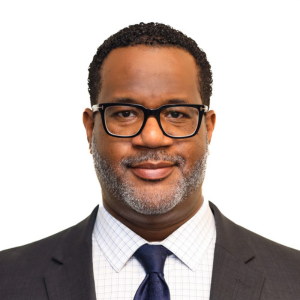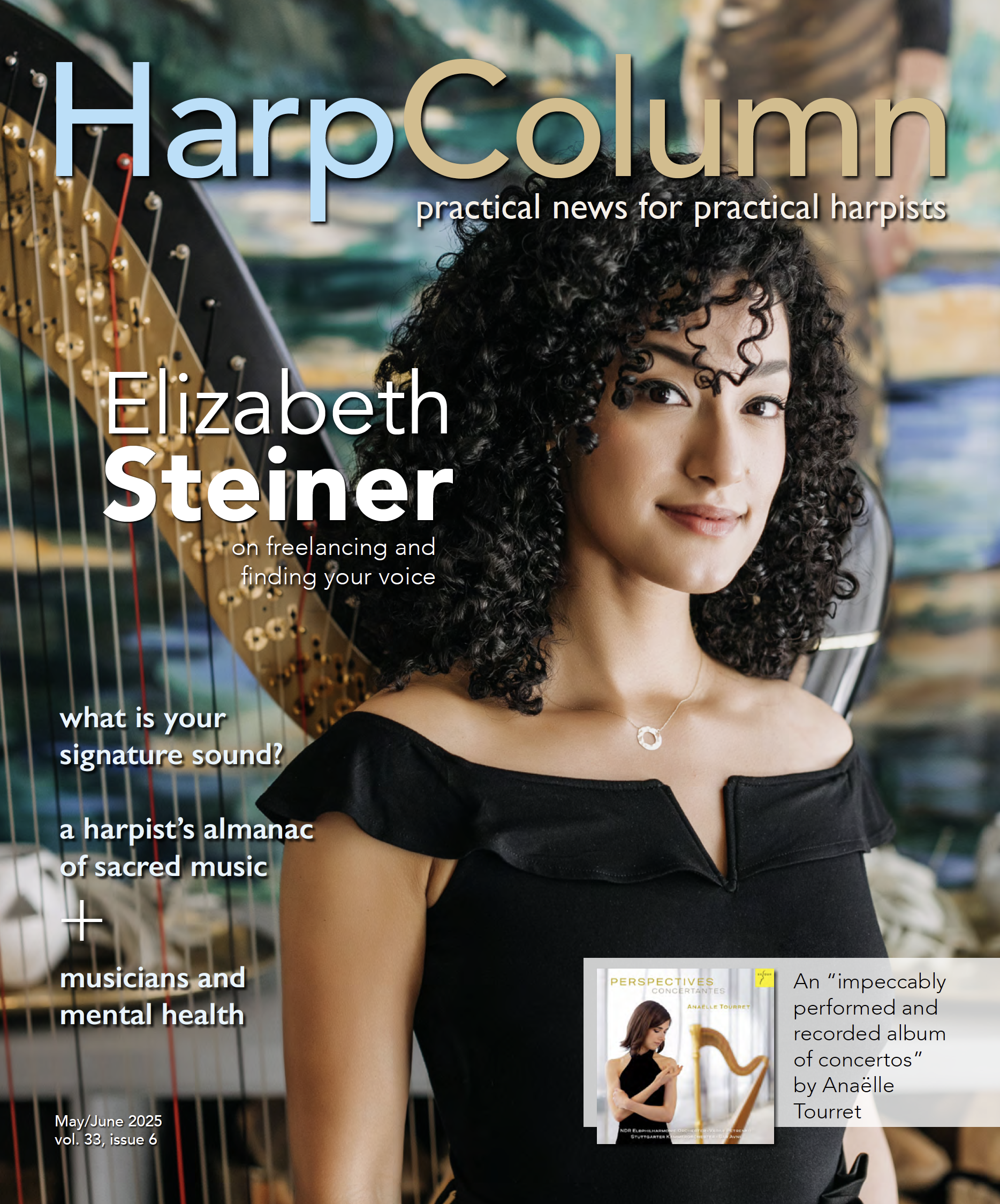
I remember going swimming as a kid and clinging desperately to the ladder. What? Let go and voluntarily enter that vast expanse of open water? Insanity! Why would I want to do that? Funny, though, how it turned out to be super fun. Even as an adult, I’m still a little excited when my hotel has a pool. Improvising at the harp has a similar feeling to me. It’s a brave leap into a wild unknown, but it is so worth it.
Here are two bits of guidance to help you get started:
Shift your mental paradigm away from polarities like “correct and incorrect,” “good and bad,” “pretty and ugly,” and move toward a place of curiosity. You are exploring. This improvised piece exists only right now. Experience it in real time. You will definitely find yourself playing things that surprise you—notes that you would not have chosen if you were crafting a piece that was destined to be published—but that’s great! Enter your improvisation with the resolve to get yourself out of whatever you get into. It is so tempting to scrap the attempt the minute you hear something you didn’t expect. Rather, challenge yourself to stick with it and see where it goes. Improvising is like exploring a garden. You don’t have to go back and smell that bizarre flower next time you visit, but you’re here right now, so take a whiff and trust that you will find your way back to the pathway in a minute. (You will.)
Give yourself a small, safe area in which to explore at first. If we stick with the garden image, maybe don’t start with the sprawling grounds of a French palace. How about your grandmother’s backyard? For example, set your levers/pedals with everything natural except for B-flat. Left hand plays only one thing—C and G together, over and over. Right hand discovers some melodies above that. (You will be playing in C mixolydian, but you don’t need to know that for it to be a satisfying first improvisation.) Try closing your eyes. Listen. Give yourself some grace. Play for just a little bit longer when you feel yourself reaching your “edge.” Turn off the lights and play in the dark. Show up and try. Do that often. Have fun!
—Phala Tracy

The art of improvisation may seem like a daunting impossibility. However, the endless possibilities found in improvisation are attainable when approaching it through the following concepts: expand, explore, and express.
Expanding what is on the printed page is the first step in developing the skill of improvisation. From theme and variations to through-composed pieces found in classical music, composers have employed the skill of improv to create a piece by expanding on a central idea. Even jazz musicians will establish the printed music on a lead sheet before embarking into improv. To begin, choose a piece (i.e. folk, pop, or sacred) that is most familiar to you and then proceed to the next concept:exploring.
Exploring the melodic and harmonic structure of a piece will inform your improv. Knowing the scale or mode employed in the melody and the qualities of the chords in the harmonic progression will allow you to experiment through improv. Adding embellishments to the melody, changing the quality of the chords in the progression, or switching up the rhythmic pattern or style of the music are a few ways to achieve this.
The goal of improv is to express your musical ideas using source material from a printed score. Expressing your own ideas will become more defined and refined as you continue to expand and explore the art of improvisation using the musical ideas from your favorite piece, song, or tune. In the words of Charles Wright, “Express yourself…go on and do it!”
—Maurice Draughn

I like to think of improvisation as building a “toolbelt” filled with various methods to use. These “tools” might include options for chord progressions, harmonies, rhythm, tempo, articulation, and styles of melody and accompaniment. Experimentation is key to learning what works and what doesn’t. Give yourself time at your instrument to practice.
Start with simple, planned chord progressions, like a sequence of four chords to repeat. Play around with left-hand accompaniment variations, then add in the right hand, keeping it within the harmony. When experimenting with melody, I recommend keeping the left hand simple. Start with a slow tempo and slow-moving melodies—this will give you time to consider where to place your fingers next.
And what about wrong notes? A jazz saxophonist once told me an interesting tip for handling mistakes during live performances. If they made an unexpected squeak, they’d incorporate that “mistake” into the music by repeating it. This reaction, based on what was played, is a useful tool for masking mistakes and guiding your next move in the phrase. For a cohesive improvisation, try repeating themes, harmonies, or styles throughout.
To close, I want to encourage you to simply play. Listen to other improvisers—whether they’re harpists or not—and learn from their style. Improvisation comes in many forms, so don’t feel confined to one way. Most importantly, express yourself and have fun! •






